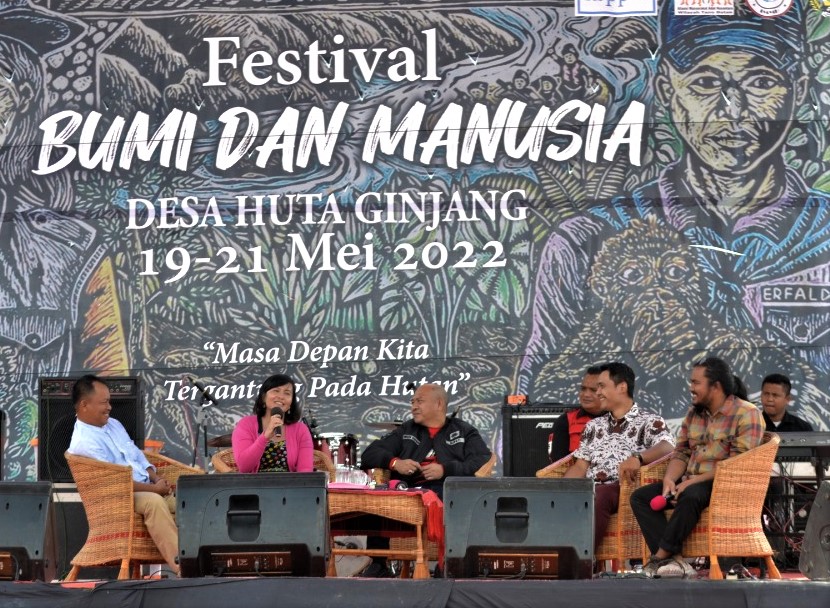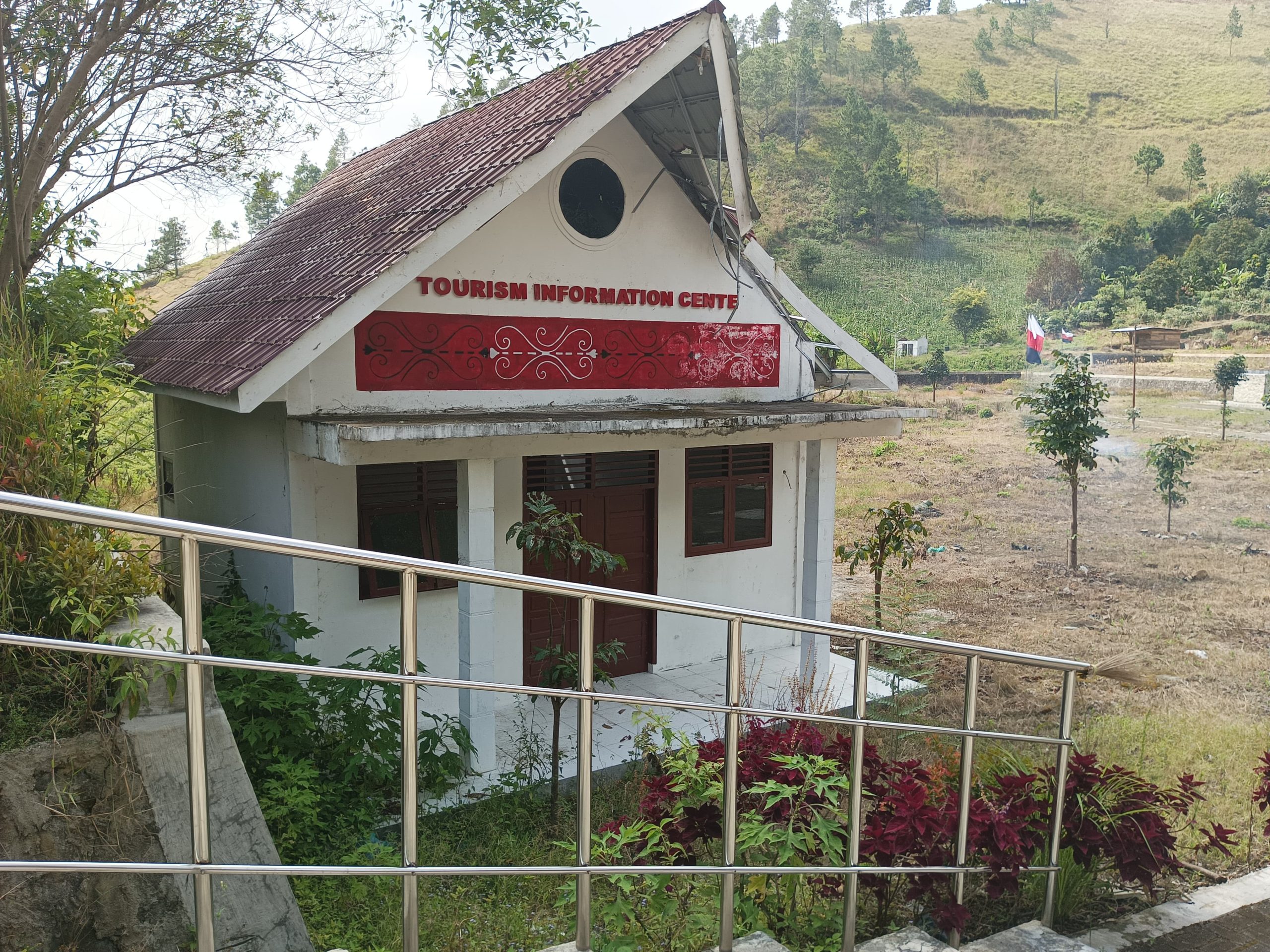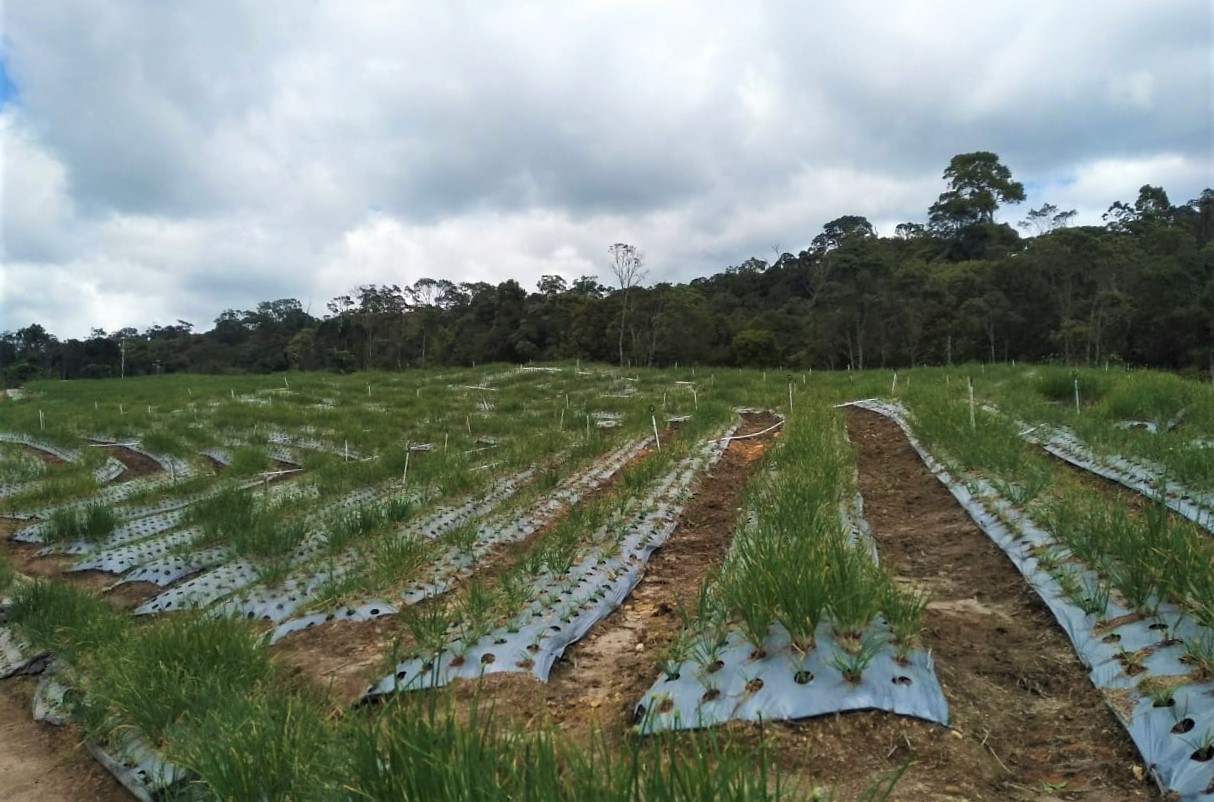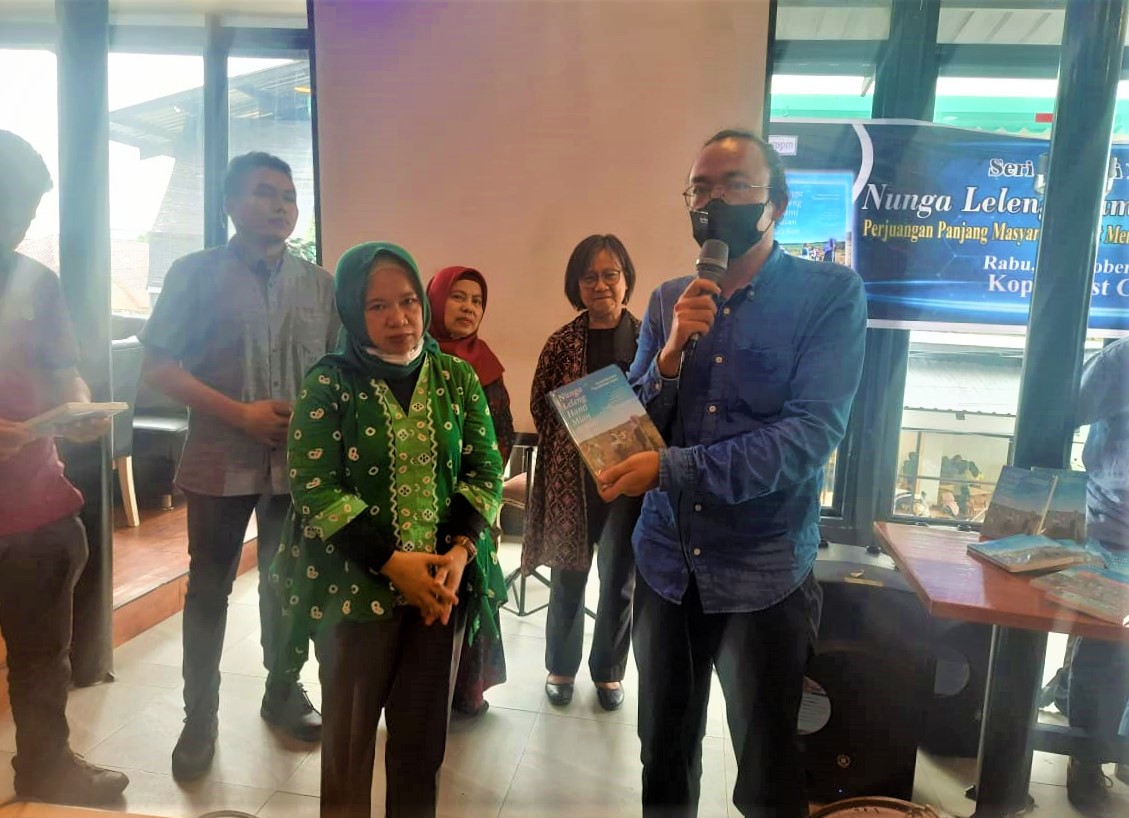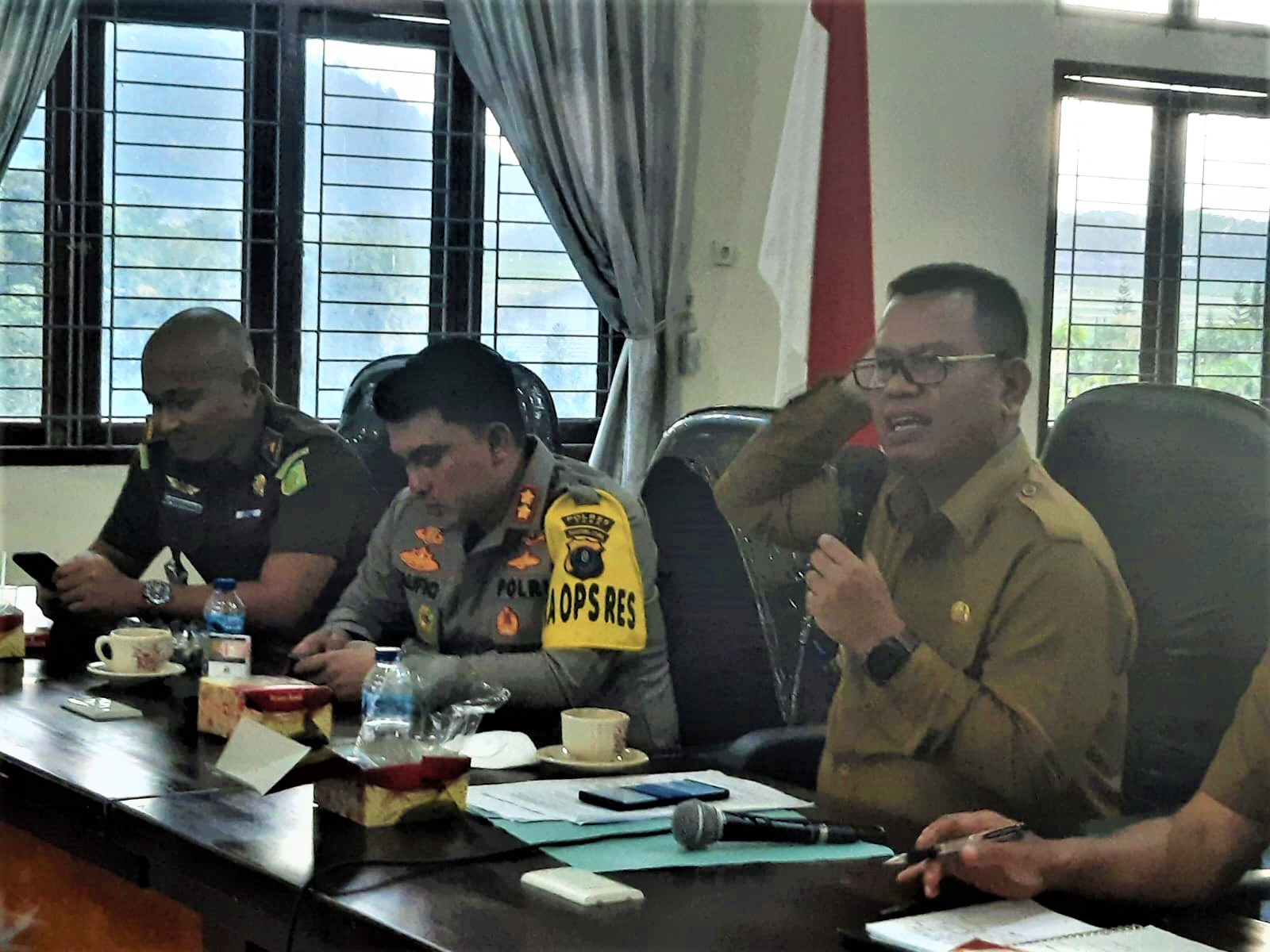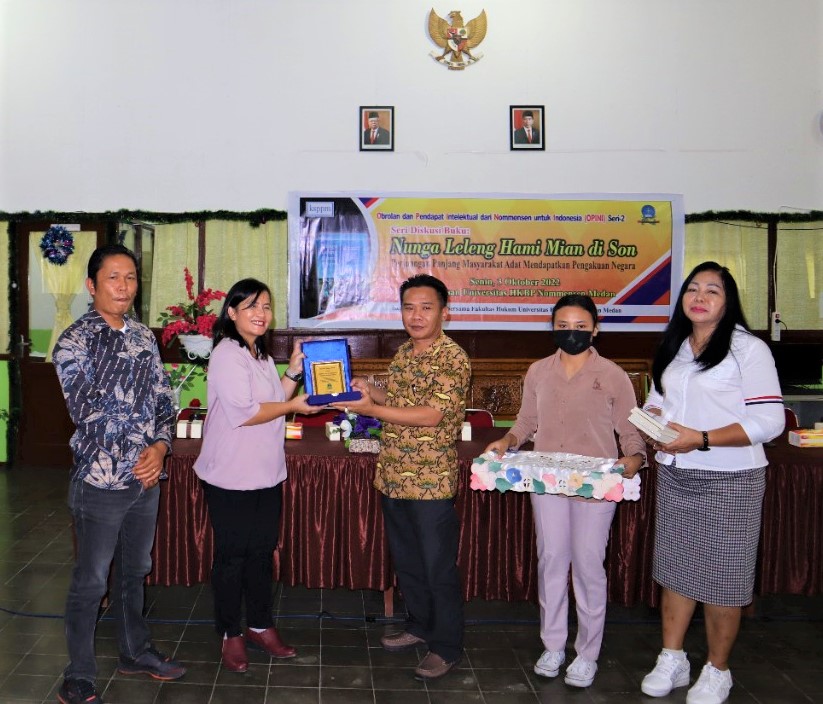“People’s self-reliance (standing on their own feet) is an important ideal of Bung Karno in the struggle for independence,” said Nikson Nababan, Regent of North Tapanuli Regency, starting a discussion on the importance of the role of local governments in the recognition and protection of indigenous peoples through local regulations in Huta Ginjang Village, Muara District, North Tapanuli on Saturday, 21 May 2021. Being inspired by Bung Karno’s values and principles is a source of inspiration for Nikson Nababan in building North Tapanuli into a sovereign society.
“I still remember when I visited Muara, at the beginning of my nomination as Taput Regent. Many people complained that their land was included in the forest area. They begged that if I was elected as a leader in North Tapanuli, their land and forests could return to white and out of the forest area,” he explained.
Not only in Muara; every visit to other villages, the same complaints and complaints always come. “This is one of my concerns to free the community’s lands, and make them white, but always through the regulations that apply in this country”, he added.
Through various discussions with various parties, including civil society organisations such as KSPPM and AMAN Tano Batak, the Regent and his staff at the North Tapanuli Regency Government saw that the opportunity to free indigenous peoples’ lands from the Forest Area is through a Regional Regulation on the Recognition and Protection of Indigenous Peoples. This was the basis for the issuance of Local Regulation No. 4 of 2021 on the Recognition and Protection of Indigenous Peoples in North Tapanuli.
Following up on the regulation, the district government has also issued decrees on the recognition of indigenous peoples and customary territories for three indigenous communities in North Tapanuli. One of these decrees is for Bius Huta Ginjang, with a customary area of 648.06 hectares. Upon the granting of this decree, members of the Bius Huta Ginjang Indigenous Community appreciated the commitment of the North Tapanuli Regent, Nikson Nababan, who helped their struggle to free their customary forest from the State Forest Area.
Nikson Nababan also expressed his commitment to help other indigenous communities who face the same problems and have not yet received the Customary Forest Decree. “Of course this can be realised if the community is united and all parties sit together, supporting each other. The Regency Government, KSPPM and AMAN Tano Batak in the future must immediately and frequently discuss the next process,” he explained.
In line with Regent Nikson Nababan, another speaker, Yance Arizona, a lecturer at the Faculty of Law (FH) UGM, said that one of the important factors in the success of indigenous peoples in obtaining the Customary Forest Decree is the cohesiveness of indigenous peoples. The second factor is of course the support of the local government, in this case the Regent and DPRD.
As an academic who has long paid attention and concern to the struggles of indigenous peoples and most recently conducted research in four regions in Indonesia on indigenous peoples, he recognises that efforts to gain recognition from the state is a very complicated process. This complexity is not only faced by indigenous peoples in North Sumatra, but nationally. This is inseparable from a long history of forestry regulations dating back to colonialism that severely restricted indigenous peoples’ access to land and forests. It continued after Indonesia’s independence and until today. “The independence achieved by the Indonesian Nation did not automatically liberate indigenous peoples’ access to their lands and forests and until now we are burdened with resolving this past problem,” Yance explained.
However, for him, the complexity does not mean that nothing has worked. There are several regions that have successfully issued regional regulations on the recognition and protection of indigenous peoples, one of which is North Tapanuli. “Kindness, pioneering, leadership is contagious,” he said. Therefore, according to him, in the future more regions will issue regional regulations on the recognition and protection of indigenous peoples and implement them.
Yance, who has published his book “Rethinking Adat Strategies”, reiterated that the role of local governments in the recognition and protection of indigenous peoples is very important, through the issuance of Regional Regulations.
The discussion was complemented by two other speakers, Delima Silalahi from KSPPM and Roganda Simanjuntak, Chairperson of AMAN Tano Batak Community. They shared the long road of struggle for indigenous peoples and their hopes for the district governments in the Lake Toba region in the future. According to Roganda, the current State Forest Area claim is also not legally binding, because it is still an appointment status. It can be said that the state’s claim to customary territories as State Forest Areas and then granting licences to other parties is illegal.
“Local governments that support the struggle of indigenous peoples to release their customary territories from the Forest Estate are indirectly fighting for sovereignty in their administrative areas. You can imagine, currently, regents in Tapanuli only have authority over 60% of their territory, while the other 40% is the central authority,” Roganda said.
The complicated struggle of indigenous peoples to fight for their rights was also expressed by Delima Silalahi, Director of KSPPM. Indigenous Peoples in Tano Batak are currently forced to manortori na so gondang na (dance to other people’s drums), in order to gain recognition. Indigenous peoples who have long lived in their customary territories, and are recognised by other neighbouring indigenous peoples, can only prove themselves as indigenous peoples through mechanisms created by the state. This mechanism makes the recognition process more complicated and lengthy, as experienced by 18 indigenous communities verified by the MoEF Verification Team in October 2021. The fate of indigenous peoples is in the hands of a verification team formed by the state with a mechanism created by the state. Indigenous peoples seem to have no other choice.
Of the 18 indigenous communities verified, only five were considered “passed”, three of which were in North Tapanuli. Therefore, Delima hopes that the “goodness” in North Tapanuli can spread to other districts that until now have not been “willing” or “reluctant” to provide recognition and protection for indigenous peoples in their regions.
Delima hopes that the indigenous peoples’ movement and its supporters in the future will succeed in making indigenous peoples dance their own drum, namely finding alternative mechanisms that are easier for indigenous peoples to be sovereign in their own territories.
The discussion participants also contributed their thoughts on the importance of the role of local governments in the recognition and protection of indigenous peoples. Jhon Toni Tarihoran from Toba Regency appreciated the North Tapanuli Regency Government for not only issuing a local regulation but also issuing three decrees recognising indigenous peoples in North Tapanuli. This is in stark contrast to what they experienced in Toba Regency. Therefore, he hopes that the good things that have been done in North Tapanuli can be transmitted to Toba Regency.
The indigenous community leader of Bius Huta Ginjang also expressed his appreciation for the community’s struggle and all parties who supported it, including the North Tapanuli District Government. It is hoped that other indigenous communities will soon obtain Customary Forest Decrees so that they can be sovereign on their land.
Not only related to indigenous peoples, Barita Lumban Gaol from Mangobay also hopes that the struggle of indigenous peoples to defend their customary territories is also accompanied by a commitment to maintain a good and harmonious relationship between the earth, humans and all other living things.
At the end of the discussion, Dian Purba, IAKN Silakitang lecturer and Rocky Pasaribu, Study and Advocacy Coordinator, handed over mementos in the form of books to the resource persons. One of the books handed over was “Nunga Leleng Hami Mian di Son: Indigenous Peoples versus the State” published by KSPPM and Insist Press. Dian Purba explained the concise contents of the book related to the complexities of the struggle of indigenous peoples to be sovereign over their living space. “This book is important to be owned by civil servants in North Tapanuli, at least to provide another perspective regarding the recognition and protection of indigenous peoples,” said Dian Purba.***

